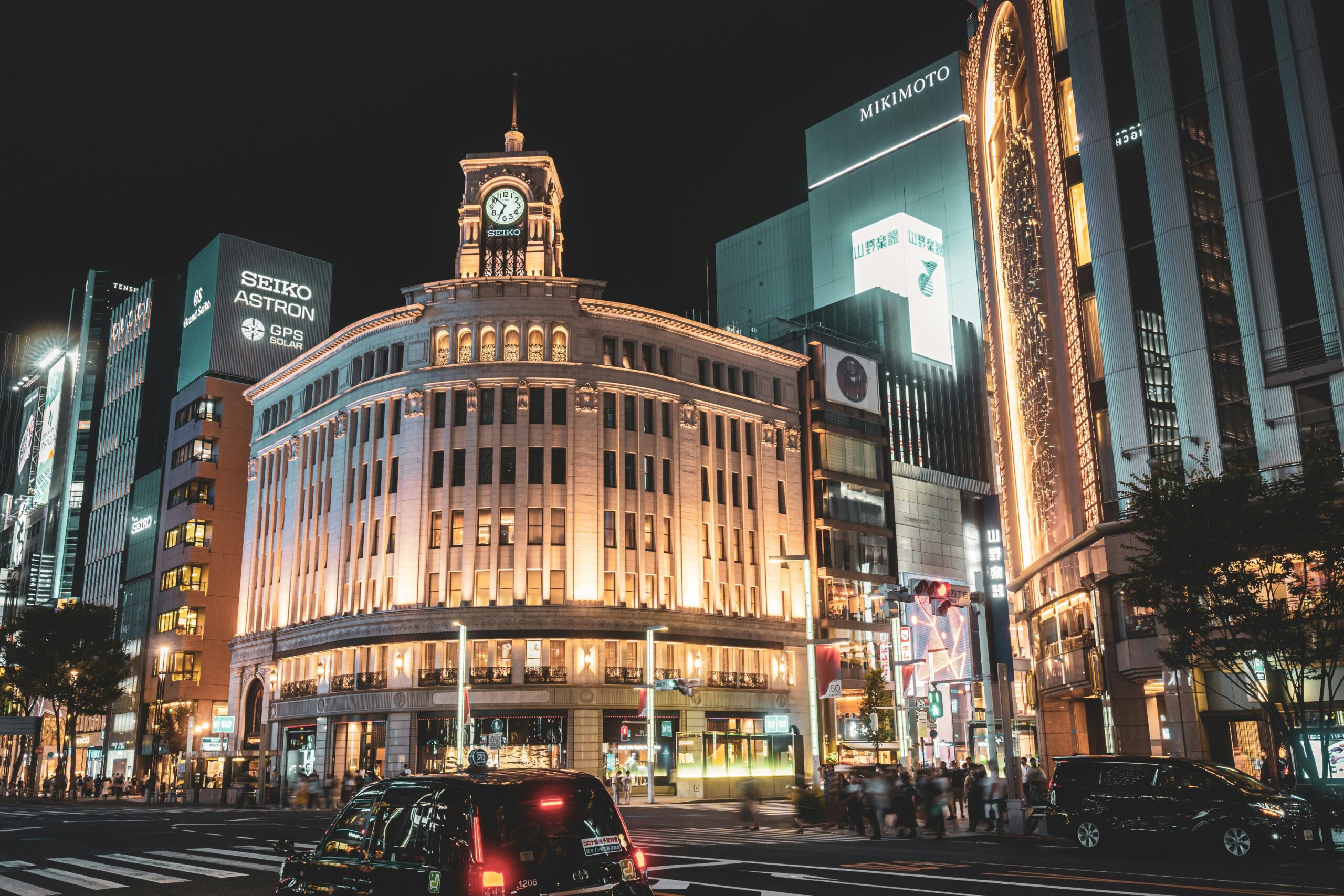Few neighborhoods in Tokyo embody the city’s timeless paradox—anchored in history yet propelled by innovation—like Ginza. To walk its polished boulevards is to experience Tokyo distilled: a district where merchants once minted silver for the shogunate, where Western architecture first reshaped the Japanese skyline, and where today, heritage and modernity blend seamlessly into an atmosphere of cultivated refinement.
A Street Paved with Centuries of Change
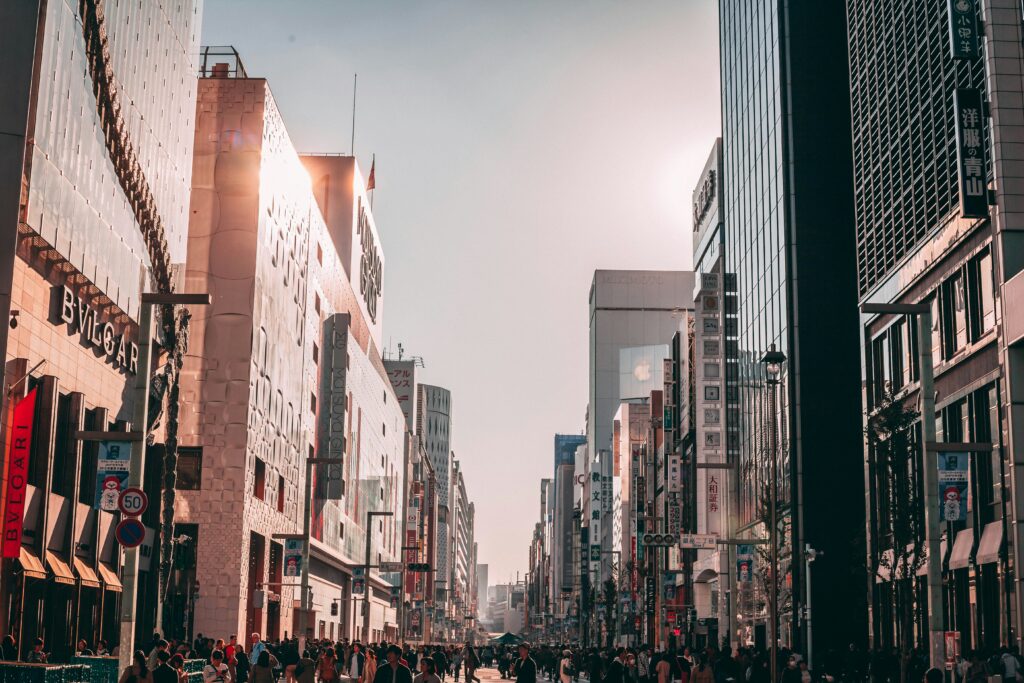
The origins of Ginza trace back to the early 17th century, when the Tokugawa shogunate established a silver mint—gin meaning silver, za a guild. From this foundation, the area blossomed into one of Edo’s most important commercial hubs. After a devastating fire in 1872, Ginza became a stage for Japan’s embrace of modernity. The government commissioned British architect Thomas Waters to rebuild the district in red brick, creating the country’s first true Western-style boulevard. The “Bricktown” that arose—with gas lamps and straight, wide streets—signaled to the world that Japan was stepping boldly into a new era.
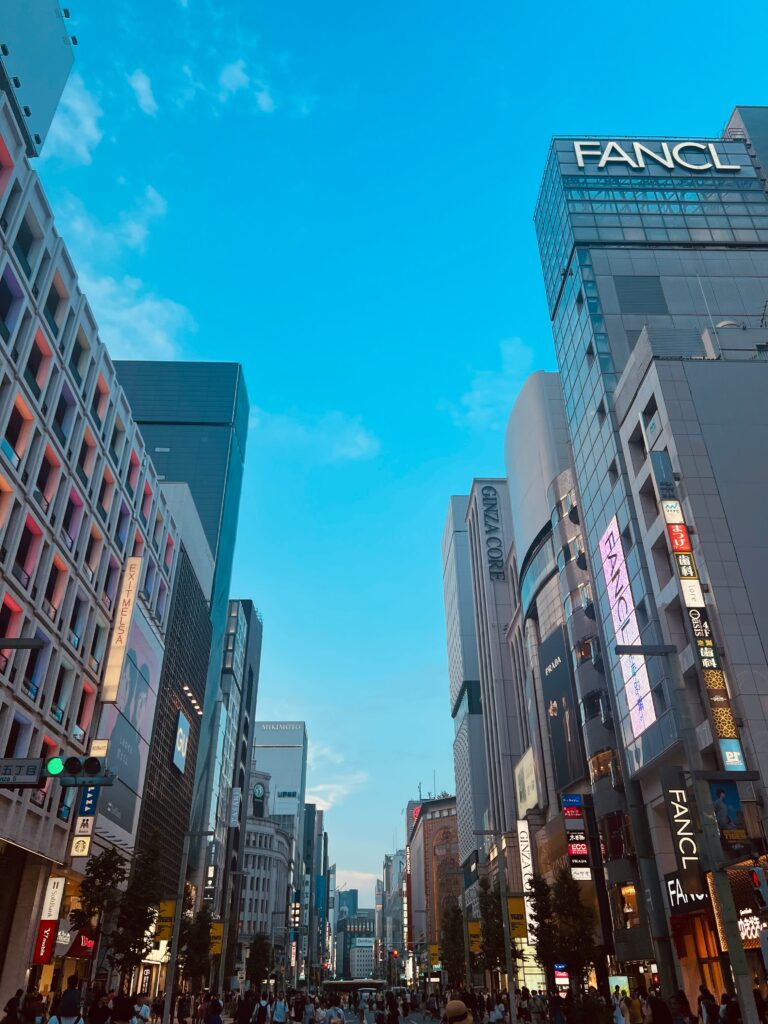
By the early 20th century, Ginza had evolved into Tokyo’s salon of modernity, attracting intellectuals, writers, and artists who gathered at its cafés to debate literature, art, and politics. The Wako Clock Tower, completed in 1932, became not only a landmark but also a symbol of Ginza’s enduring elegance amid turbulent times. Even after the war, when much of Tokyo reinvented itself in neon, Ginza preserved its poise, combining the avant-garde with a sense of cultivated continuity.
The Ginza of Today: A Dual Identity
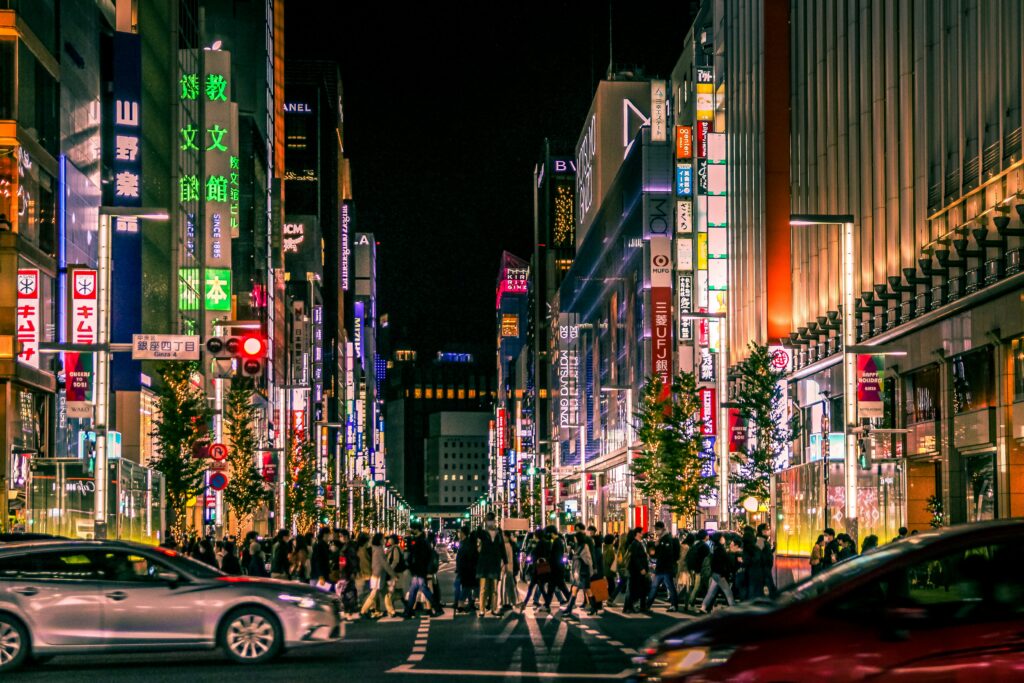
What makes Ginza remarkable is its ability to balance two seemingly opposing worlds: business and leisure. By day, it is the polished domain of corporate Japan, where global headquarters rise in sleek towers, and dealmakers gather in discreet boardrooms. Yet step a street or two away, and the same avenues become a stage for leisurely exploration—luxury boutiques, hidden galleries, and tea houses that invite unhurried moments. Unlike Shinjuku’s frenetic business core or Roppongi’s nightlife-driven economy, Ginza wears its dual identity with effortless grace: formal yet indulgent, pragmatic yet poetic.
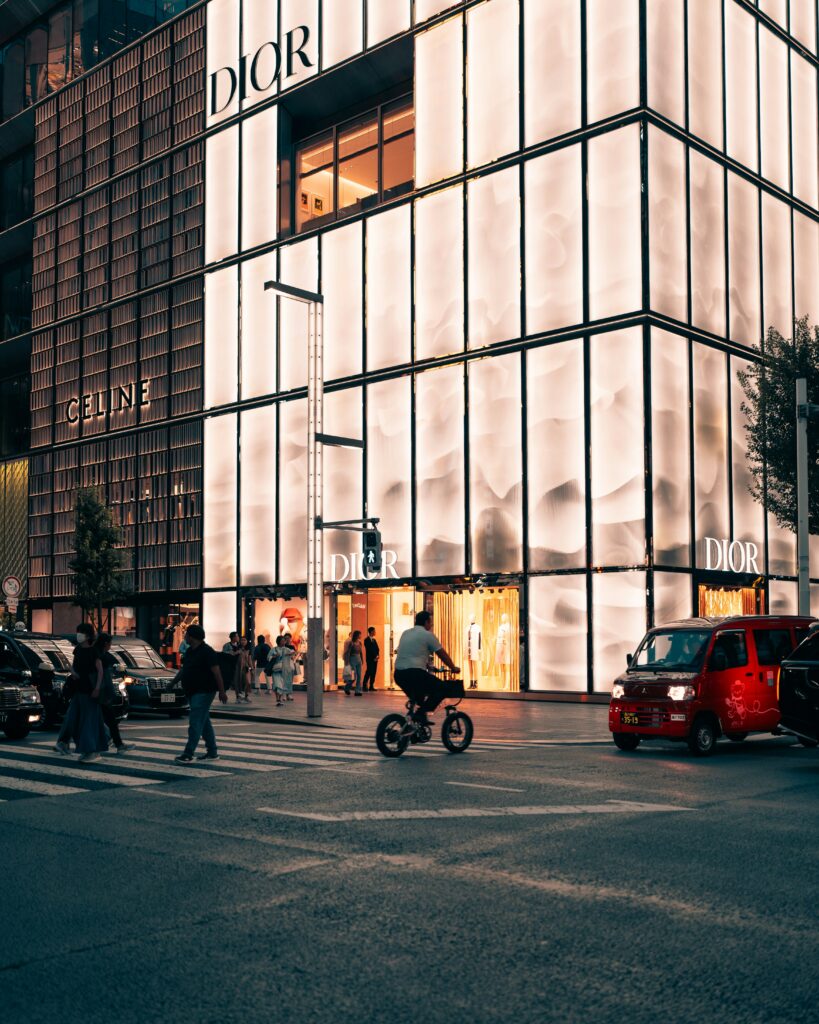
Architectural Elegance and Streetscape
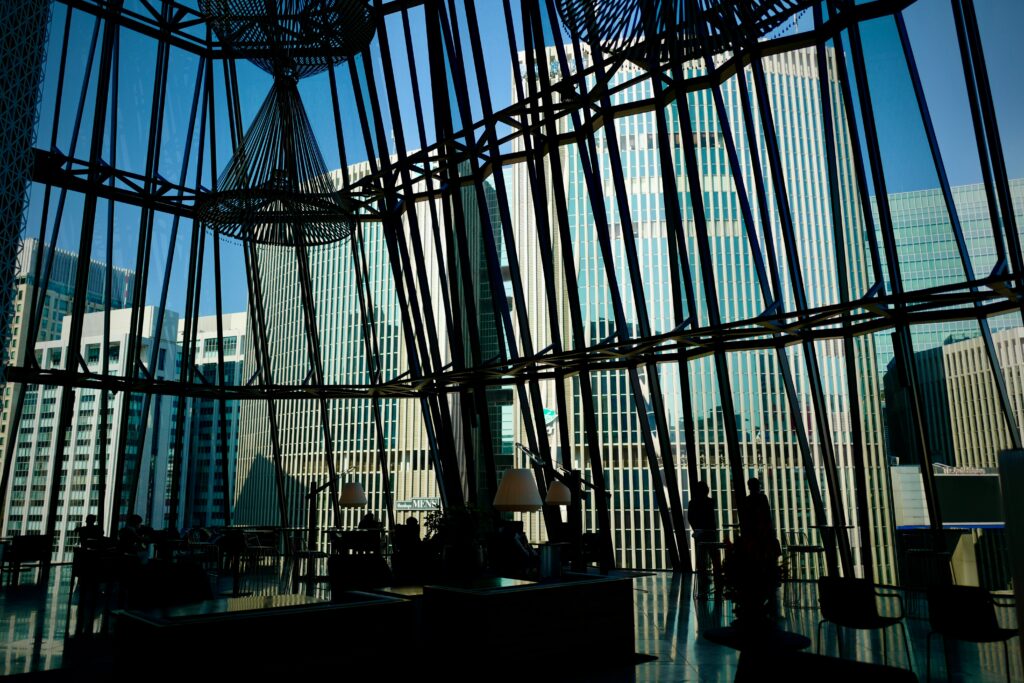
Ginza is as much about its skyline as its street life. Unlike the chaotic layering of Shibuya, Ginza’s architecture is deliberate—an urban anthology. The Wako Clock Tower stands in quiet conversation with Kengo Kuma’s latticework façades, Renzo Piano’s sleek glass towers, and the organic, sculptural forms of SANAA. Each building is a statement, yet collectively they form a visual harmony, echoing Ginza’s ethos of refinement. Walking Chuo-dori, especially on weekends when it is closed to traffic and transformed into a pedestrian promenade, is akin to visiting an open-air museum of contemporary architecture woven into historical fabric.
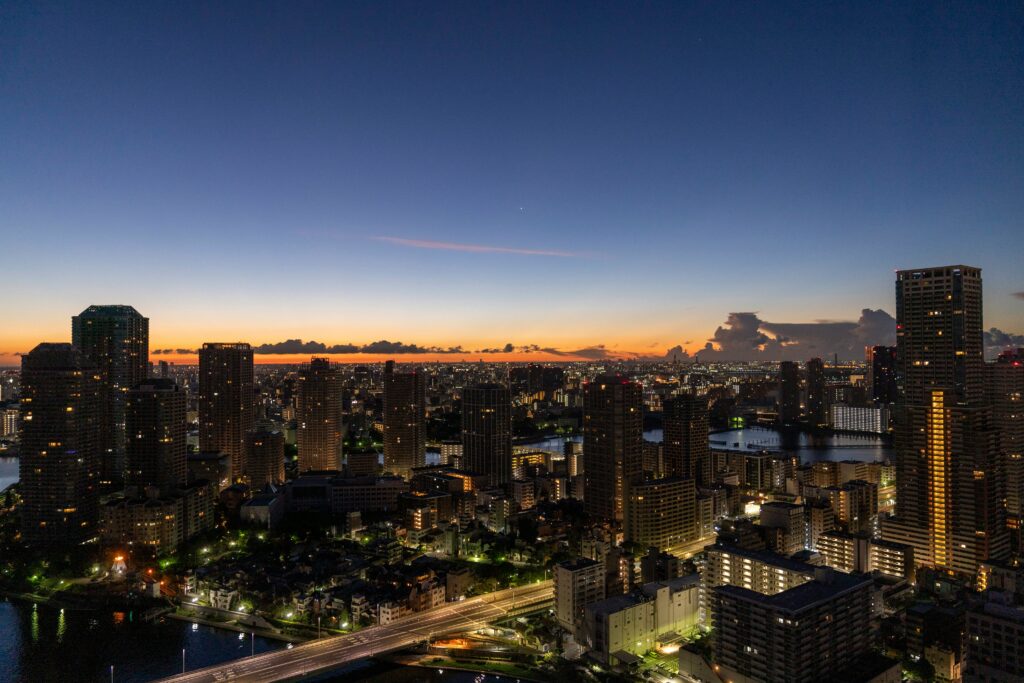
Day and Night: Two Faces of Ginza
By daylight, Ginza sparkles with polished serenity. The boutiques gleam, the tea salons host elegant gatherings, and galleries open their doors to those seeking inspiration. It is a district that encourages strolling, pausing, and indulging in detail—whether in the cut of a kimono, the texture of handmade washi, or the artistry of a plated lunch.
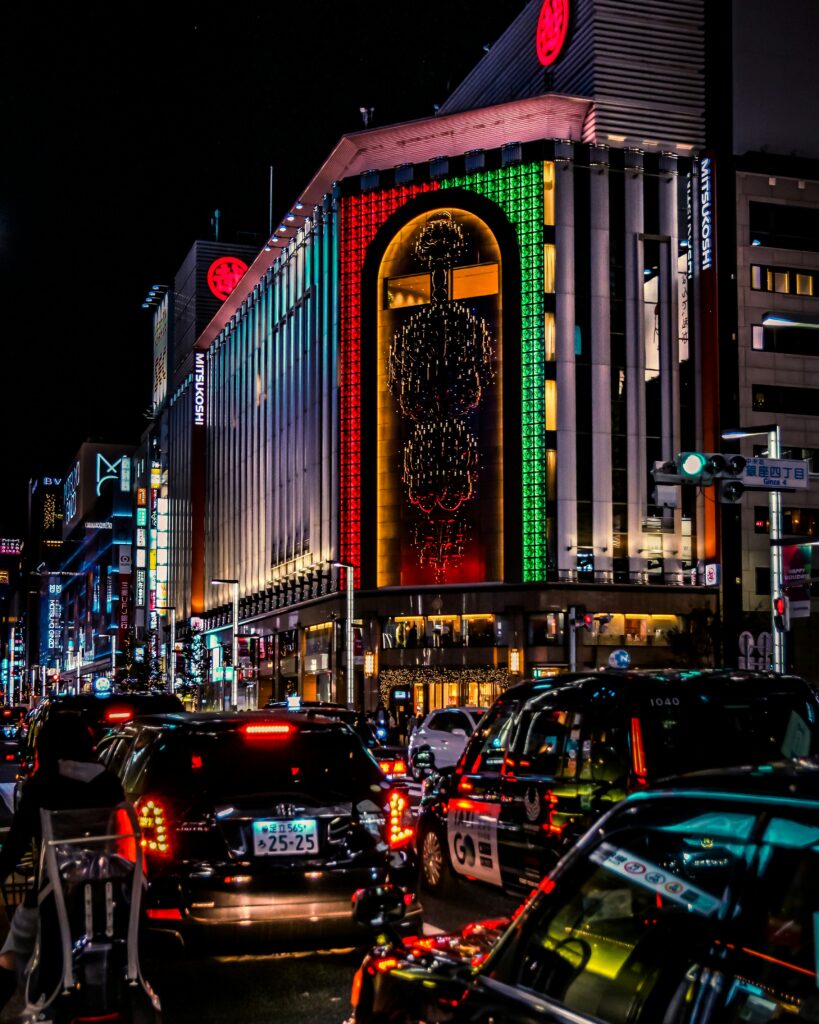
At night, Ginza transforms. The neon signs illuminate the boulevards, casting a cinematic glow over its stone pavements. Michelin-starred restaurants hum with quiet anticipation, while behind nondescript doors, intimate bars and private clubs awaken. The energy is more subdued than Shinjuku’s buzzing nightlife, but more refined—cocktails prepared with precision, jazz whispered from basements, and conversations conducted as if time itself were slowed. The Ginza night is not loud; it is velvet.
Culinary Excellence, Then and Now
Ginza’s dining scene mirrors its historical layering. Long-established sushi counters continue traditions perfected over generations, serving omakase that is as much performance as cuisine. Across the street, French-Japanese fusion chefs reimagine gastronomy with global sophistication. And tucked into quiet side streets, venerable wagashi shops offer seasonal confections paired with matcha, reminding visitors that in Ginza, modern indulgence always bows to tradition.
Shopping as Cultural Exploration
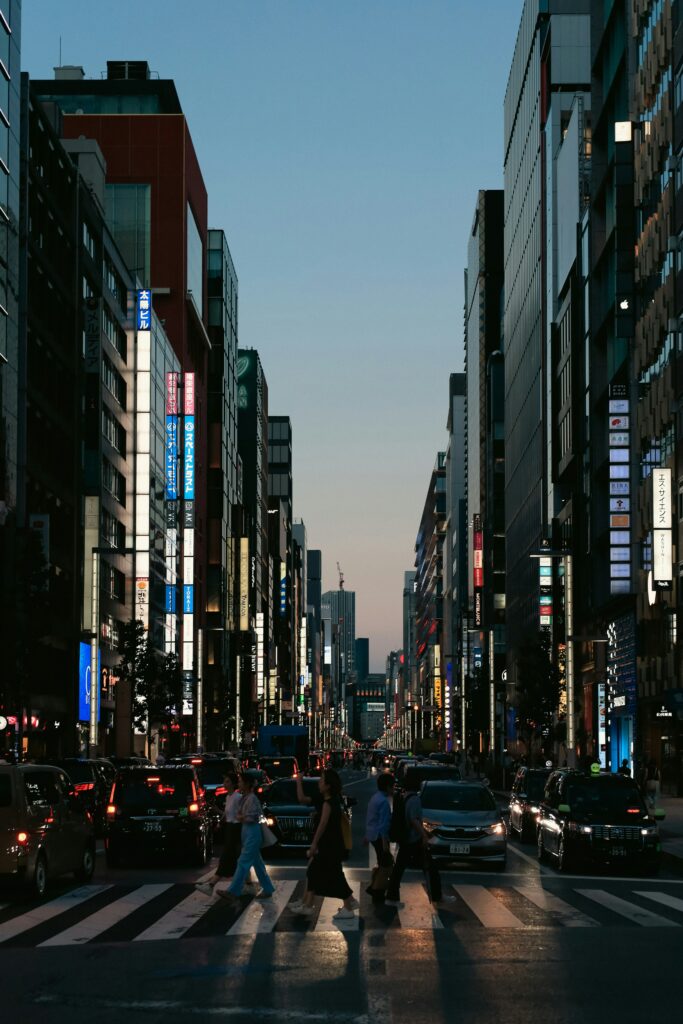
While Omotesando dazzles with fashion-forward trends and Harajuku bursts with youth culture, Ginza approaches shopping as an art form. Its flagship stores of global maisons stand alongside ateliers where artisans craft pearls, lacquerware, and bespoke kimonos. A purchase here is not only an act of luxury but also a conversation with Japanese heritage. Even window shopping becomes an education in design and craftsmanship.
Hidden Corners and Quiet Secrets
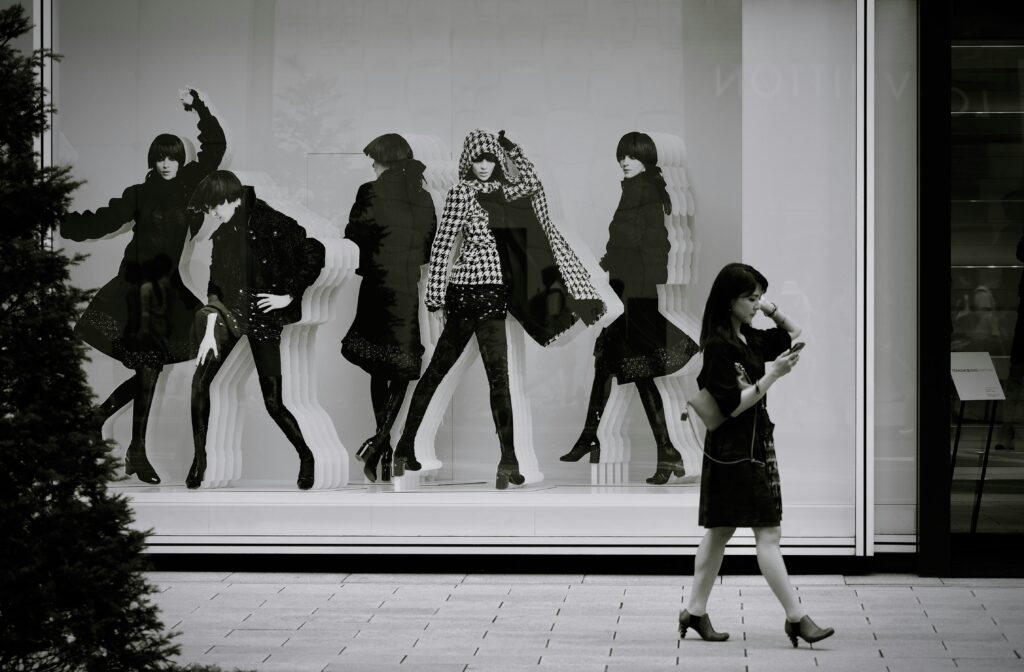
The true connoisseur’s Ginza lies just beyond the obvious. A discreet gallery curating avant-garde calligraphy. A 20-seat sushi bar where the chef remembers your preferences from a single visit. Rooftop terraces offering views that turn the city into a luminous ukiyo-e print. Jazz bars with vinyl collections older than their clientele. These hidden pleasures are the soul of Ginza, rewarding curiosity with intimacy.
How to Experience Ginza Fully
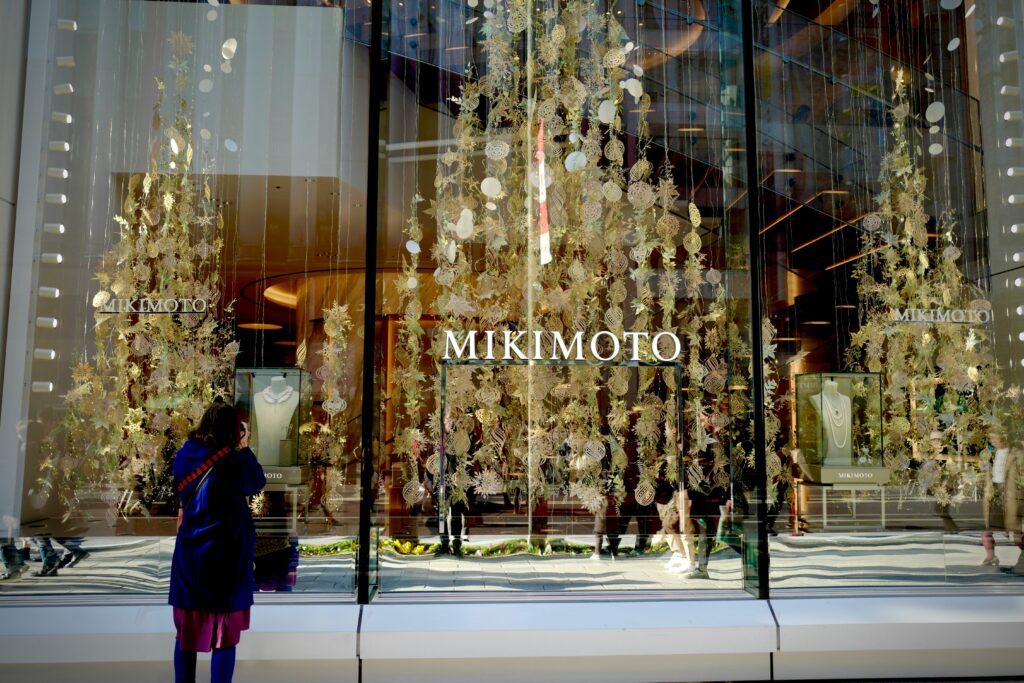
To appreciate Ginza is to surrender to its rhythm. Begin your day with a slow tea ceremony in a tucked-away salon. Spend the late morning wandering Chuo-dori, letting architecture and shop windows narrate their own stories. Pause at an art gallery, then enjoy a kaiseki lunch where seasonal flavors unfold like poetry. In the afternoon, let yourself drift into a boutique or an atelier, before watching the sunset reflected on glass façades. As evening falls, slip into a Michelin-starred restaurant, then descend into a quiet bar where the city’s hum turns into music.
The Future of Ginza
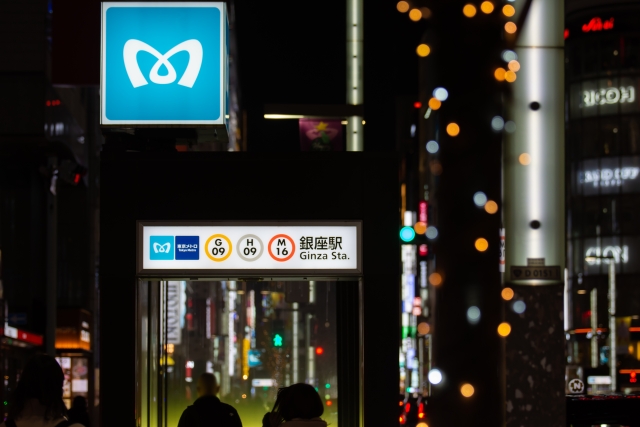
Unlike younger districts that reinvent themselves with each passing decade, Ginza evolves with measured continuity. Recent redevelopments embrace sustainability and artistry while preserving its cultural gravitas. The district looks toward the future not with disruption, but with refinement—ensuring that Ginza remains the heart of Tokyo’s elegance for generations to come.
A City Within a City
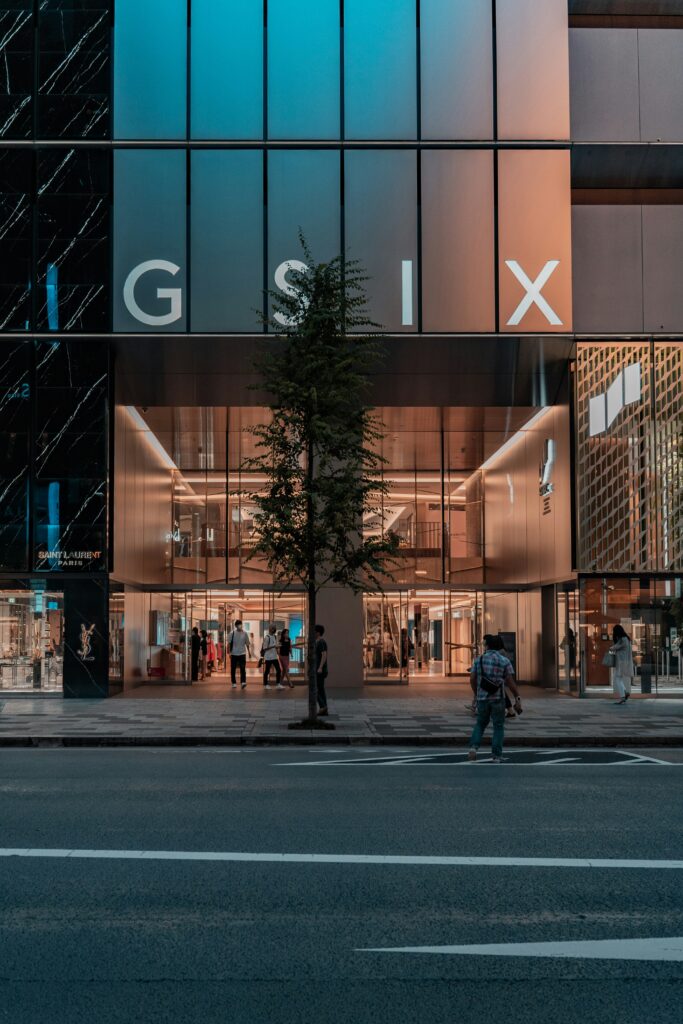
What distinguishes Ginza from any other district is not its abundance of luxury, but its balance. It is a place where history is not displayed as relic but lived as rhythm; where architecture speaks of both heritage and vision; where business and leisure coexist without contradiction. For the affluent traveler, Ginza offers more than indulgence—it offers an encounter with Tokyo’s essence, distilled into a neighborhood that is timeless, layered, and endlessly fascinating.

